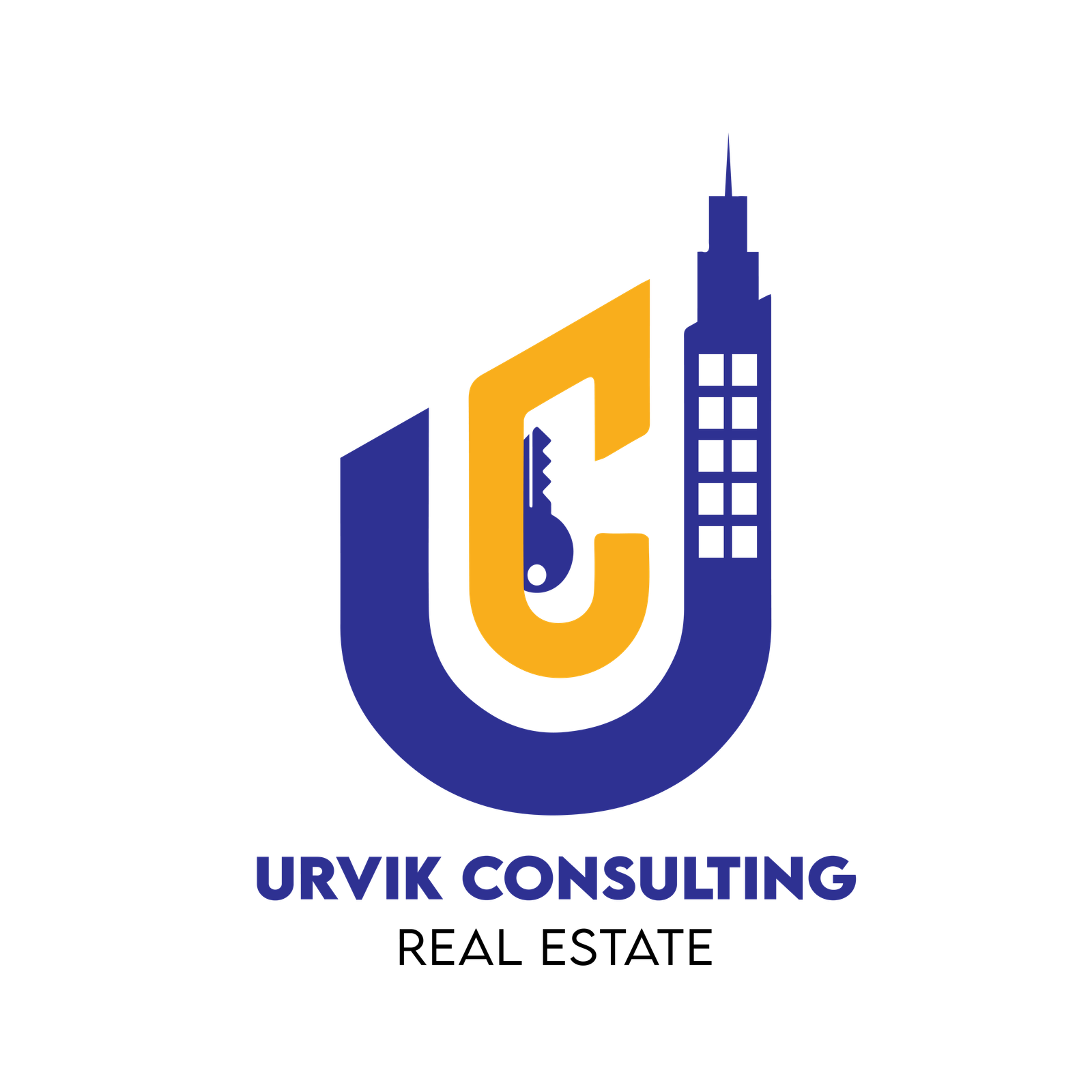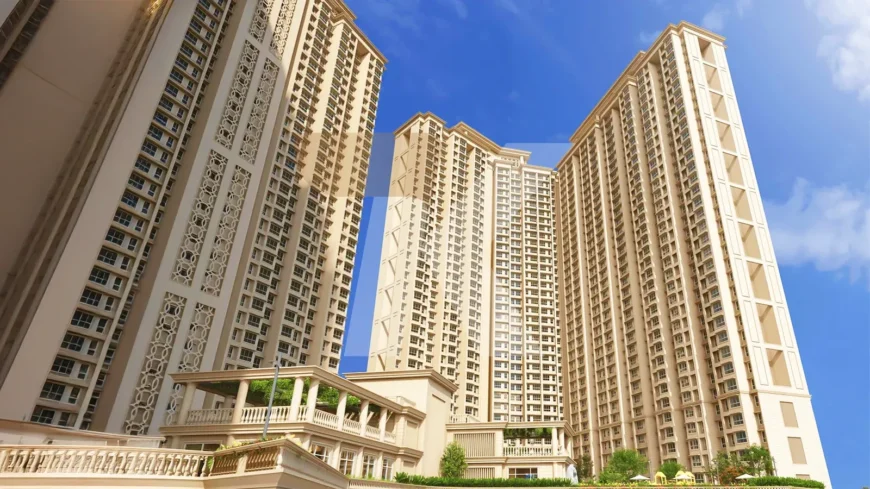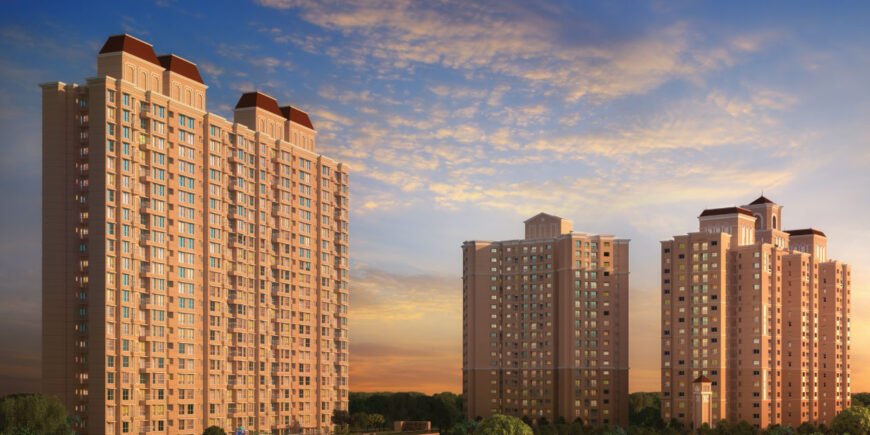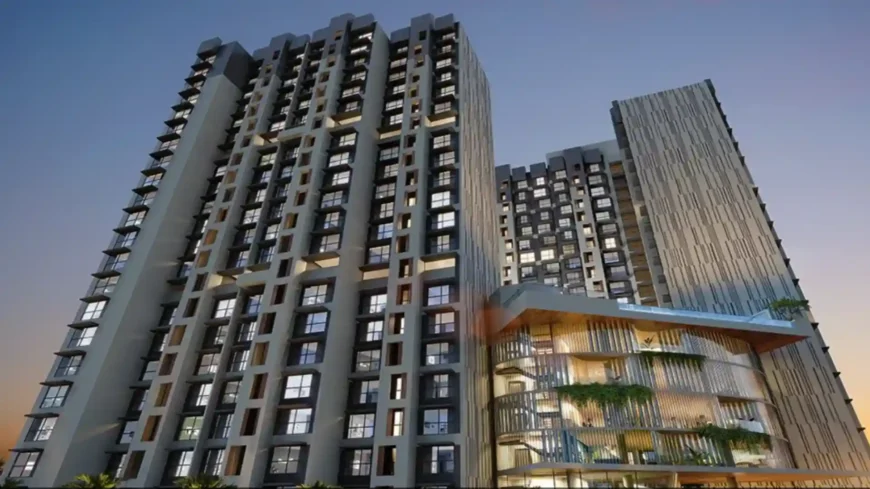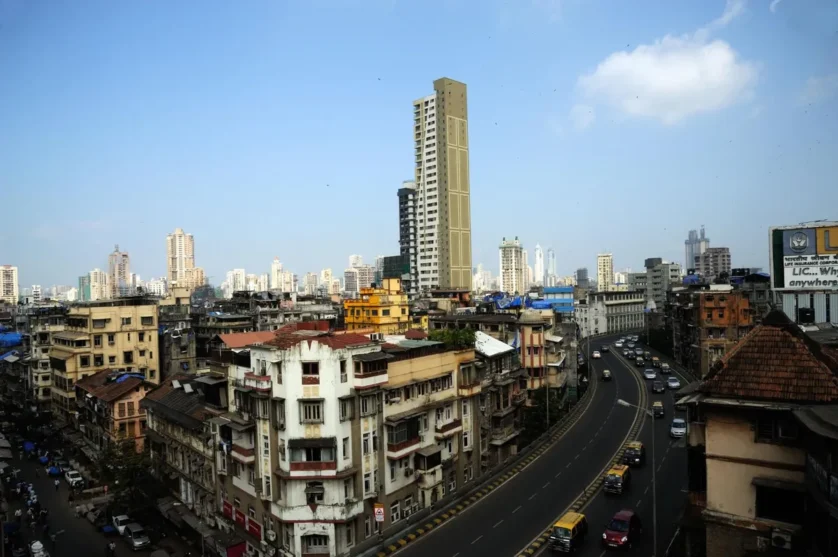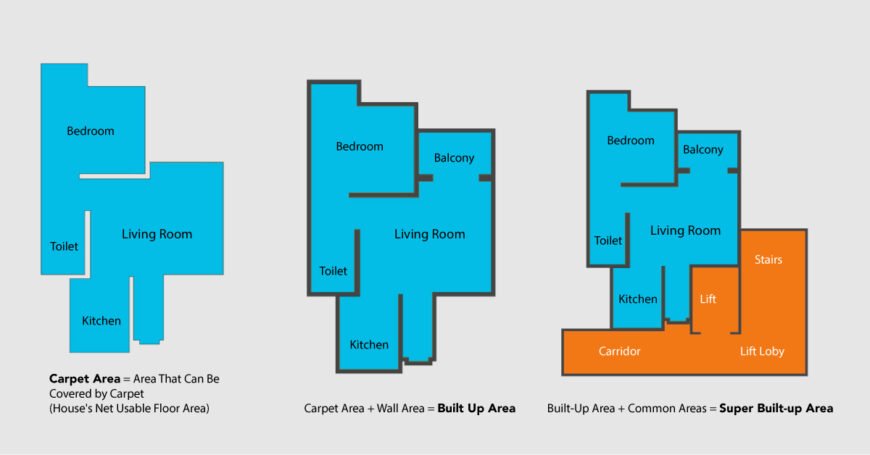Hidden Costs in Real Estate That First-Time Buyers Often Miss
Buying your first home is an exciting milestone—whether it’s about achieving financial independence or finally owning a space you can call your own. But for many first-time buyers in India, this excitement is often tempered by unexpected costs that show up well after the purchase decision is made.
At Urvik Consulting, we believe that an informed buyer is an empowered buyer. So here’s a breakdown of the most common hidden costs in real estate that first-time homebuyers should plan for—before signing on the dotted line.
Table of Contents
1. Stamp Duty & Registration Charges
These are mandatory fees charged by the government for property registration.
- Stamp Duty: 5% to 7% of the property value (state-dependent)
- Registration Fees: Around 1% of the property value
2. GST on Under-Construction Properties
GST applies only to under-construction properties:
- 5% GST for standard homes
- 1% GST for affordable housing
No GST is applicable on ready-to-move-in properties.
3. Brokerage & Consultant Fees
While some deals are brokerage-free, many involve charges of 1%–2% of the property cost.
4. Legal & Due Diligence Costs
Legal vetting of documents (title deed, encumbrance, RERA status, etc.) can cost ₹5,000 to ₹25,000, depending on complexity.
👉 Don’t skip legal due diligence—it’s the best insurance against future disputes.
5. Home Loan Processing Charges
Banks charge 0.25% to 1% of the loan amount as a processing fee. Some also add technical and legal verification charges.
Always read your loan agreement carefully and compare offers from multiple lenders.
6. Society Deposits & Maintenance
New societies often charge:
- Corpus fund
- Clubhouse fee
- Elevator & common area charges
These can add up to ₹50,000 or more.
7. Parking Charges
Parking is often sold separately—especially in metro cities.
- Cost: ₹2 to ₹10 lakhs
👉 Clarify parking allotment and charges during negotiations.
8. Interior Setup & Furnishing Costs
Most homes are handed over without essentials like:
- Modular kitchens
- Wardrobes
- Electrical fixtures
Expect to spend 5%–10% of the property price on interiors.
9. Annual Property Tax
Payable yearly to the local municipal body.
- Typical Range: ₹1,000 to ₹20,000
This cost varies based on your city and property type.
10. Relocation & Shifting Expenses
Don’t forget moving costs:
- Packers & movers
- Labor charges
- Travel costs
These can run into thousands of rupees, especially for intercity moves.
11. Utility Connection Charges
You may need to pay for new connections or deposits for:
- Electricity
- Water
- Gas pipeline
- Internet/DTH
👉 In some areas, “unofficial charges” may be involved—plan accordingly.
12. Delayed Possession Costs
If you’re renting while waiting for your new home, EMIs + rent can create a financial burden.
👉 Always verify the developer’s RERA registration and past track record.
How to Avoid Hidden Costs in Real Estate
- Request a full cost sheet from your builder or seller.
- Hire a real estate lawyer for legal vetting.
- Choose RERA-registered projects for better transparency.
- Keep a 10%–15% buffer in your budget to absorb surprises.
Why Staying Informed Matters
Most first-time buyers focus only on the sale price, down payment, and loan EMI. But hidden costs can increase your total outlay by 10% to 20%—if not more.
With expert guidance from Urvik Consulting, you can make smarter decisions, avoid financial shocks, and plan confidently for your future.
Final Thoughts
Buying your first home is a rewarding experience—but preparation is key. Hidden costs in real estate are real, and they can catch even the smartest buyer off guard.
At Urvik Consulting, we’re committed to full transparency and buyer empowerment. Whether you’re looking for investment advice or help navigating paperwork, our consultants are here to guide you—every step of the way.
North Imperial Greens Thane by JP Infra: Affordable Luxury in a Thriving Neighbourhood
Table of Contents
JP Infra has consistently stood for quality, trust, and thoughtful development in Mumbai’s real estate landscape. Continuing this legacy, North Imperial Greens Thane emerges as another landmark project that embodies modern living while remaining accessible for aspiring homeowners.
Located in the vibrant neighborhood of Thane, North Imperial Greens is designed to deliver both comfort and convenience, offering a perfect blend of urban amenities and the tranquility of nature.
Thane’s Transformation and the Rise of Affordable Luxury
Over the past two decades, Thane has transformed from a quiet suburb into one of the fastest-growing urban centers in the Mumbai Metropolitan Region (MMR). The city’s excellent infrastructure, green landscapes, and expanding social fabric have made it a favored destination for both homeowners and investors.
The biggest attraction for buyers is Thane’s affordability compared to Mumbai’s skyrocketing property prices. For first-time buyers and families seeking larger spaces without straining their budget, projects like North Imperial Greens Thane offer the ideal solution.
Introducing North Imperial Greens Thane by JP Infra

Situated in one of Thane’s well-connected locales, North Imperial Greens is set to redefine affordable luxury. JP Infra has meticulously planned this project to cater to modern urban lifestyles without compromising on comfort or aesthetics.
Residents can choose from thoughtfully designed 1 BHK and 2 BHK apartments that are spacious, well-ventilated, and filled with natural light. Each home is crafted to provide a pleasant living experience, making it perfect for families, working professionals, and even retirees seeking peace and convenience.
Modern Amenities for a Contemporary Lifestyle

North Imperial Greens offers a host of lifestyle amenities to enrich daily living, including:
✅ Swimming Pool – Perfect for relaxation and leisure.
✅ Clubhouse – A vibrant space for social gatherings and recreation.
✅ Fully Equipped Gymnasium – For a healthy and active lifestyle.
✅ Children’s Play Area – Safe and fun spaces for kids.
✅ Landscaped Gardens – To enjoy moments of calm amidst greenery.
✅ 24×7 Security – Ensuring safety and peace of mind for all residents.
Why North Imperial Greens Thane is an Excellent Investment
Strategic Location
North Imperial Greens enjoys excellent connectivity via Ghodbunder Road, reducing commute times and ensuring seamless access to business districts, IT hubs, educational institutions, and healthcare facilities. Thane Railway Station is easily reachable, while the proposed Metro Lines 4 and 4A will further boost connectivity across the MMR.
Proximity to Essential Services
From schools and colleges to hospitals, banks, shopping malls, and entertainment centers, residents of North Imperial Greens have everything they need within a short distance. Landmarks like New Horizon Scholars School, Vedant Hospital, Currae Gynaec Centre, and major retail hubs make daily life extremely convenient.
Green Spaces and Quality of Life
Surrounded by serene landscapes, North Imperial Greens offers views of Thane’s green belts and nearby hills. Many housing complexes, including this project, incorporate lush gardens and open areas, allowing residents to reconnect with nature despite being in a bustling city.
Affordable Yet Luxurious

The average price per square foot in Thane remains significantly lower than in central Mumbai, making North Imperial Greens a smart investment. Buyers get modern, well-designed homes with premium amenities at a price point that’s accessible for middle-income families.
JP Infra’s reputation for timely project delivery and quality construction adds further confidence for buyers looking for both a great lifestyle and solid investment potential.
Conclusion: A Smart Choice for the Future
Thane’s growth story is far from over, and projects like North Imperial Greens Thane by JP Infra are well-positioned to benefit from the city’s continuing transformation. For anyone seeking affordable luxury with excellent connectivity and modern amenities, North Imperial Greens offers a golden opportunity to secure a quality home in one of Mumbai’s most promising neighborhoods.
Now is the time to invest in your dream home at North Imperial Greens Thane and experience the perfect balance of urban convenience and serene living.
Adani Group’s ₹36,000-Crore Redevelopment to Transform Motilal Nagar Goregaon Mumbai
Table of Contents
Mumbai’s skyline is poised for a dramatic transformation once again, and this time, it’s Motilal Nagar in Goregaon West that’s taking center stage. In a historic move, Adani Group has signed an agreement with Maharashtra Housing and Area Development Authority (MHADA) to redevelop the sprawling 142-acre Motilal Nagar — marking MHADA’s largest single redevelopment project to date.
As a real estate consulting firm committed to tracking transformative trends, Urvik Consulting takes a closer look at what this colossal urban renewal means for Mumbai’s housing market, urban planning, and the people whose lives it will touch.
A Project of Unprecedented Scale
Motilal Nagar, located strategically in Goregaon West, has long been a bustling residential hub. Now, under this ₹36,000-crore redevelopment, it’s set to emerge as a modern township that blends residential, commercial, and social infrastructure seamlessly.
Key facts about the project include:
- Total area: 142 acres (approx. 57.5 hectares)
- Residential units: About 3,372 MHADA homes to be rebuilt
- Commercial units: 328 shops and commercial spaces
- Slum rehabilitation: Around 1,600 slum dwellings integrated under SRA norms
- MHADA’s share: Nearly 3.97 lakh sq. m. of built-up area for the authority
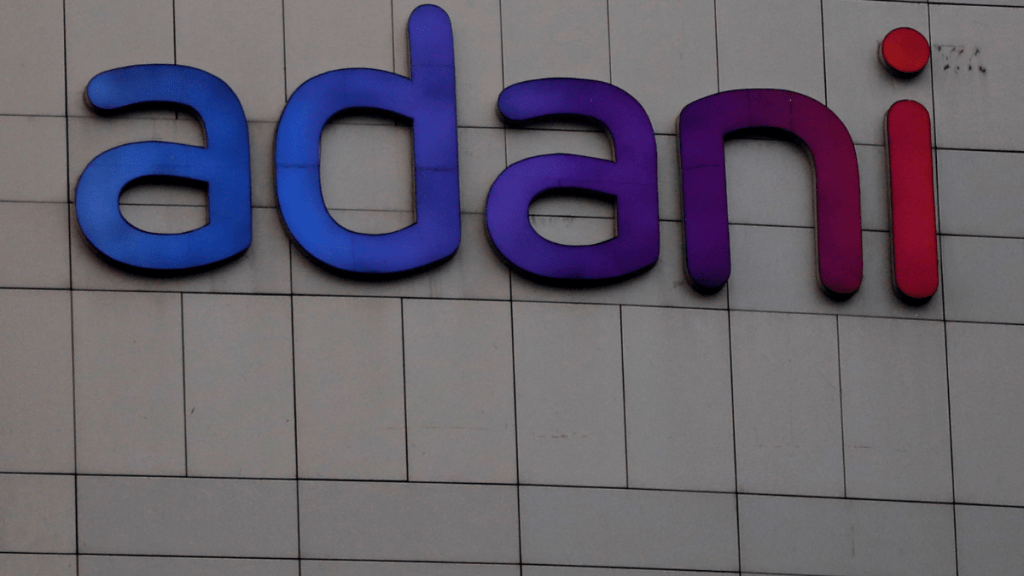
This makes it one of the most significant urban projects in India’s real estate landscape.
The Promise of Modern Urban Living
One of the standout features of the redevelopment is the size and quality of housing being offered:
- MHADA tenants will receive flats with 1,600 sq. ft built-up area—a substantial upgrade from the often-cramped quarters many residents currently occupy.
- Slum dwellers will get 300 sq. ft homes, while commercial establishments will be allotted nearly 987 sq. ft spaces.
- The design incorporates European urban planning expertise, with renowned firms Mecanoo (Netherlands) and Buro Happold (UK) lending their vision to create well-planned layouts, green spaces, and sustainable urban amenities.
The plan isn’t just about buildings; it encompasses parks, roads, schools, hospitals, and robust civic infrastructure, aiming to elevate the standard of living for thousands of families.
Urban Renewal Meets Real Estate Opportunity
From a real estate perspective, Motilal Nagar’s redevelopment is significant for several reasons:
- Boost to Goregaon’s Market: The area already enjoys excellent connectivity to Western Express Highway, SV Road, and the suburban railway network. This redevelopment is set to enhance its appeal as a high-potential residential and commercial destination.
- New Supply Pipeline: The additional free-sale components that Adani Group can build will introduce premium housing inventory, attracting both end-users and investors.
- Urban Infrastructure Upgrade: Beyond housing, this project will create modern civic infrastructure, raising the profile and livability of the entire neighborhood.
- Investment Sentiment: Large-scale projects of this magnitude indicate strong confidence in Mumbai’s long-term urban growth and economic vitality.
At Urvik Consulting, we foresee ripple effects on property prices in and around Goregaon, as renewed infrastructure and modern housing elevate buyer interest.
A Balancing Act of Stakeholder Interests
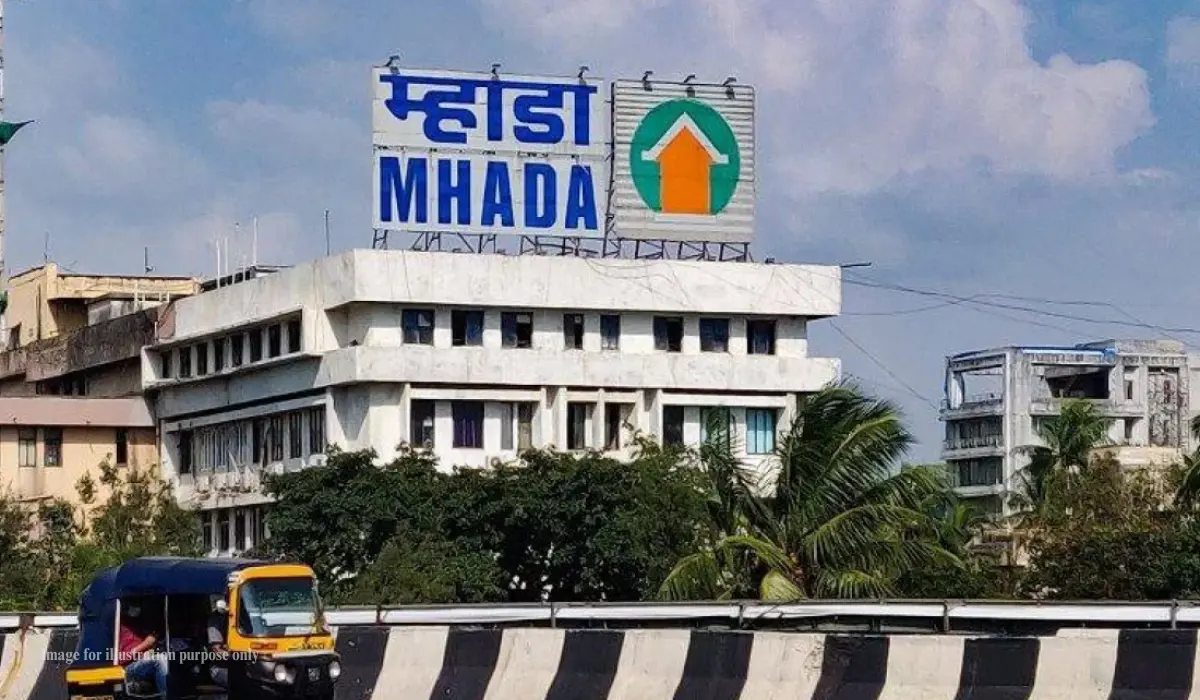
Despite its promise, the project has not been without controversy. Some Motilal Nagar tenants have expressed dissatisfaction, seeking a larger carpet area of 2,000 sq. ft rather than just 1,600 sq. ft built-up space. Concerns have also been raised about lack of consultation and transparency in the process.
MHADA, however, emphasizes that the agreement ensures land ownership remains with the government body, with Adani acting purely as a development and construction partner. This model seeks to protect public interest while leveraging private sector efficiencies.
Timeline and Outlook
The redevelopment is slated for completion within seven years, targeting 2032 as the finish line. Given the scale and complexities, timelines may evolve, but the commitment from both Adani and MHADA signals strong intent.
This project is especially significant coming on the heels of Adani Group’s high-profile Dharavi redevelopment contract. Together, these projects reflect a new era of urban regeneration in Mumbai, where public-private partnerships are reshaping the city’s landscape.
The Bigger Picture for Mumbai
Motilal Nagar’s transformation isn’t just about real estate — it’s a story of social impact, urban modernization, and sustainable development. For residents, it represents hope for better living conditions. For investors and the broader market, it signals confidence in Mumbai’s unstoppable urban growth.
At Urvik Consulting, we’ll continue to monitor progress and keep our clients informed about investment opportunities and evolving market dynamics stemming from this landmark redevelopment.
Are you exploring investment possibilities or redevelopment projects in Mumbai? Connect with Urvik Consulting for expert insights and strategic guidance tailored to your goals.
Affordable vs Premium: Comparing Mumbai Suburbs for Home Buyers and Investors
Table of Contents
From modest apartments on the city’s outskirts to towering luxury skyscrapers in prime zones, Mumbai’s real estate market is incredibly diverse. But what really separates an affordable suburb from a premium one?
Whether you’re a first-time homebuyer, a savvy investor, or simply exploring options, understanding this divide can help you make the right property decision.
What Makes a Suburb Affordable or Premium in Mumbai?
It’s not just about price tags. The distinction comes down to:
✅ Location — central vs. outskirts
✅ Connectivity — rail, road, metro
✅ Amenities & lifestyle — basic vs. luxury living
✅ Future potential — how much value the area might gain over time
Affordable Suburbs: Budget-Friendly Choices on Mumbai’s Edges
Price Range: ₹4,000 – ₹10,000 per sq. ft.
Typical Buyers: Middle-income families, first-time buyers, investors seeking affordable entry points
Key Features: Basic infrastructure, growing connectivity, decent rental yields
✅ Panvel
- Price: ₹9,000–₹14,000/sq. ft.
- Strong future thanks to the Navi Mumbai International Airport and Mumbai Trans-Harbour Link (MTHL)
- Clean environment and new townships coming up
✅ Virar
- Price: ₹6,000–₹8,000/sq. ft.
- Excellent rail connectivity on Western Line
- Affordable for new buyers, with decent amenities
✅ Nalasopara
- Price: ₹5,000–₹7,000/sq. ft.
- Extremely budget-friendly
- Still developing in terms of infrastructure
✅ Badlapur & Ambernath
- Price: ₹4,500–₹6,500/sq. ft.
- Central Railway connectivity
- Popular for entry-level investments
These areas are transforming rapidly, especially Panvel, which is emerging as a future real estate hotspot due to mega infrastructure projects.
Premium Suburbs: Luxury Living and Elite Status
Price Range: ₹25,000 – ₹1,20,000+ per sq. ft.
Typical Buyers: HNIs, NRIs, celebrities, top executives
Key Features: Prime locations, luxury amenities, status symbol, strong long-term value
Top Premium Suburbs:
🌟 Bandra (West)
- Price: ₹80,000–₹1,20,000/sq. ft.
- Bollywood’s backyard
- Chic cafes, sea views, heritage vibe mixed with modern towers
🌟 Worli
- Price: ₹70,000–₹1,10,000/sq. ft.
- Stunning sea views and skyscrapers
- Quick access to South Mumbai via the Sea Link
🌟 Juhu
- Price: ₹65,000–₹1,00,000/sq. ft.
- Famous for bungalows and beachfront living
- Attracts film stars and old-money families
🌟 Powai
- Price: ₹25,000–₹45,000/sq. ft.
- Beautiful lake views and modern township living
- Ideal for IT professionals in nearby business hubs
🌟 Lower Parel
- Price: ₹50,000–₹90,000/sq. ft.
- High-end malls, corporate offices, luxury high-rises
These locations offer not just homes but a premium lifestyle, with features like rooftop pools, concierge services, and high-profile social circles.
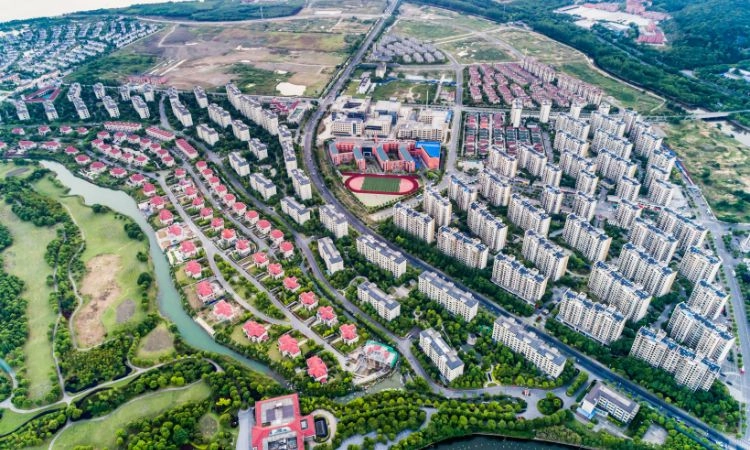
How Infrastructure Shapes Mumbai’s Real Estate Map
Infrastructure changes everything in Mumbai. Affordable areas are often transformed by new roads, metros, and airports, leading to price growth.
✅ Affordable Suburbs Gaining Ground:
- Panvel is booming thanks to MTHL and the upcoming Navi Mumbai International Airport.
- Dombivli and Kalyan are benefitting from new metro lines and highways.
- Virar and Vasai see growth due to expressways and railway upgrades.
✅ Premium Suburbs Stay Strong:
- Bandra-Worli Sea Link keeps Bandra and Worli premium.
- Metro Line 3 will enhance connectivity for zones like Worli and Mahalaxmi.
- Eastern Freeway and Coastal Road keep South Mumbai accessible.
Cost Comparison: Affordable vs Premium Suburbs
Here’s how property costs compare:
| Suburb Type | Location | Price Range (₹/sq. ft.) | 1 BHK Price | 3 BHK Price |
|---|---|---|---|---|
| Affordable | Panvel | ₹9,000–₹14,000 | ₹35–60 lakhs | ₹90 lakhs–1.5 crore |
| Affordable | Virar | ₹6,000–₹8,000 | ₹25–35 lakhs | ₹60–80 lakhs |
| Premium | Bandra W | ₹80,000–₹1,20,000 | ₹3.5–5 crore | ₹9–15 crore |
| Premium | Worli | ₹70,000–₹1,10,000 | ₹3–4 crore | ₹8–12 crore |
| Premium | Powai | ₹25,000–₹45,000 | ₹1–1.5 crore | ₹2.5–4 crore |
Insights:
- Panvel remains about 20–25% cheaper than Navi Mumbai areas, making it a smart investment pick.
- Premium zones maintain their value due to location and lifestyle.
- Infrastructure in Panvel is steadily pushing prices upward.
Rental Trends: Where Are Tenants Looking?
Rental demand is healthy across segments:
| Suburb Type | Location | 1 BHK Rent | 3 BHK Rent |
|---|---|---|---|
| Affordable | Panvel | ₹8,000–₹12,000 | ₹25,000–₹40,000 |
| Affordable | Virar | ₹6,000–₹9,000 | ₹18,000–₹30,000 |
| Premium | Bandra | ₹55,000–₹90,000 | ₹1.5–3 lakh |
| Premium | Worli | ₹50,000–₹85,000 | ₹1.2–2.5 lakh |
| Premium | Powai | ₹35,000–₹60,000 | ₹85,000–1.5 lakh |
Key Takeaway:
- Affordable suburbs like Panvel offer strong rental yields due to growing demand from professionals.
- Premium zones have stable rents but require a much higher upfront investment.
Lifestyle: What Do You Get for Your Money?
Affordable Suburbs:
- Basic but improving amenities like gyms, parks, children’s areas
- Essential public transport and local markets
- Panvel is seeing modern gated communities with new features like swimming pools and landscaped parks
Premium Suburbs:
- Infinity pools, private gyms, sky lounges
- Concierge services, private elevators, smart home tech
- Luxury shopping, fine dining, elite schools nearby
- Prestige and exclusivity
If you’re looking for value and practicality, affordable areas like Panvel are ideal. But if you want luxury and status, premium suburbs deliver an unmatched lifestyle.
Investment Outlook: Where to Buy in 2025?
Affordable Suburbs (e.g., Panvel)
- Lower entry cost
- High potential for future appreciation
- Attractive rental yields
Premium Suburbs (e.g., Bandra, Worli)
- Stable asset value
- Prestige and luxury appeal
- Consistent demand among affluent buyers
In 2025, Panvel is the hot topic. It’s transitioning from an affordable suburb to a premium micro-market, thanks to mega projects like the Navi Mumbai airport and MTHL.
Who Should Buy Where?
| Buyer Profile | Best Choice | Why |
|---|---|---|
| First-time buyers | Affordable suburbs like Panvel, Virar | Lower costs, future growth potential |
| Investors | Panvel, Powai | Rental income, property appreciation |
| Luxury seekers | Bandra, Worli, Juhu | Elite lifestyle, premium amenities |
| Professionals in Navi Mumbai | Panvel, Kharghar | Proximity to jobs and transit hubs |
| NRIs/HNIs | Bandra, Worli, Powai | Safe premium investments, prestige |
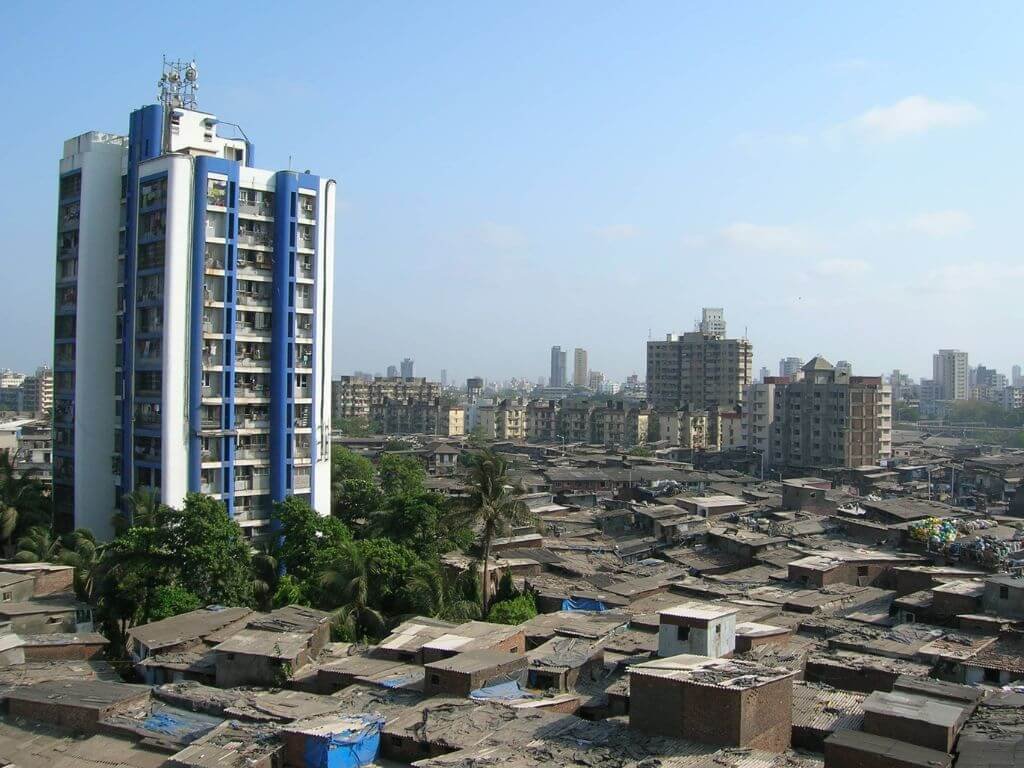
Final Thoughts
Whether you’re looking for budget housing or an exclusive lifestyle, Mumbai has options for every dream and budget.
- Choose affordable suburbs like Panvel or Virar if you want long-term growth and lower entry costs.
- Opt for premium zones like Bandra or Worli if luxury living and high-profile addresses matter most.
At Urvik Consulting, we’re here to help you navigate these choices and invest wisely in Mumbai’s ever-changing property landscape.
5 Smart & Legal Ways to Save Stamp Duty on Your Property Purchase in India
Table of Contents
Buying a home is one of life’s biggest milestones—but it comes with hefty costs, especially stamp duty and registration charges. The good news? There are several smart and legal ways to reduce your stamp duty bill without breaking any rules.
If you’re planning to buy property in India, here are 5 effective tips to save stamp duty and make your home-buying journey a little easier on the pocket.

1. Register Property Jointly with a Female Family Member
One of the simplest ways to cut down your stamp duty costs is to register the property jointly with a woman in your family, like your wife, mother, or daughter.
Why it works:
✅ Many states offer lower stamp duty rates for women. For instance, in Delhi, women pay 4% compared to 6% for men. On a high-value property, this 2% saving can run into lakhs of rupees.
✅ It also encourages women’s property ownership and financial security.
Tip: Ensure the woman co-owner genuinely holds a share in the property to comply with legal requirements.
2. Buy in a Rural or Semi-Urban Area
If you’re open to living slightly outside major cities, buying in rural or less urbanized zones can help you save a lot on stamp duty.
Here’s why:
✅ Rural and semi-urban areas often have lower circle rates, meaning the property’s government-assessed value is lower—and so is your stamp duty.
✅ Many state governments provide additional subsidies for properties outside city limits to boost regional development.
✅ As infrastructure grows, these areas can appreciate significantly in value.
3. Take Advantage of Government Rebates & Subsidies
Several Indian states offer stamp duty rebates, concessions, or subsidies for specific groups of homebuyers, such as:
- First-time buyers
- Women
- Senior citizens
- Beneficiaries of affordable housing schemes
For example, Maharashtra has periodically reduced stamp duty to stimulate the real estate market. These offers can translate to big savings—sometimes slashing stamp duty rates by 1-3%.
Tip: Stay updated on your state government’s housing policies or consult a property expert to ensure you don’t miss out on available benefits.
4. Register at the Circle Rate (If Legally Applicable)
Stamp duty in India is calculated on the higher of two values: the transaction price or the circle rate (also called the ready reckoner rate).
If the property’s market value and the circle rate are close—and it’s legal to register at the circle rate—you can save a significant sum.
Example:
- Market value of your flat: ₹60 lakhs
- Circle rate value: ₹50 lakhs
If you register the property at ₹50 lakhs (and it’s legitimate), your stamp duty is calculated on the lower value—saving you thousands.
⚠️ Important: Underreporting the property value below actual market price is illegal and can attract severe penalties. Always consult a legal expert to ensure your transaction complies with the law.
Also Read : Understanding RERA for Thane Property Buyers
5. Transfer Property Through a Gift Deed to Blood Relatives
Another excellent way to save on stamp duty is via gift deeds between blood relatives, such as parents, children, spouses, or siblings.
Many states offer heavily reduced stamp duty rates—or even fixed fees—for such transfers.
For instance:
- In Maharashtra, the stamp duty for gifting property from parents to children is just ₹200—far lower than the regular percentage-based duty.
Benefits:
✅ Legally recognized under the Transfer of Property Act.
✅ Saves significantly on both stamp duty and registration fees.
✅ Perfect for family succession planning or settlement.
Tip: Always register the gift deed properly and keep documents proving the relationship to qualify for exemptions.
Final Thoughts
While paying stamp duty is unavoidable, you don’t have to pay more than necessary. Whether it’s registering jointly with a woman family member, exploring rural locations, or using government rebates, these legal strategies can help you save big on your property purchase in India.
Before finalizing any transaction, talk to a trusted legal or real estate advisor to ensure you’re fully compliant—and making the most of every saving opportunity.
How Adani Projects Are Transforming Real Estate in Mumbai and Navi Mumbai (2025 Update)
Table of Contents
Mumbai’s real estate landscape is witnessing a game-changing shift—and at the forefront is Adani Real Estate. From the ambitious ₹10,000 crore Panvel township to the transformative Dharavi redevelopment, Adani is redefining urban life in both Mumbai and Navi Mumbai. Backed by infrastructure growth, government support, and a vision for sustainable urban living, these projects signal a new era for property buyers and investors in 2025.
Adani Projects Driving Real Estate Growth
One of the most significant milestones in Adani’s real estate journey is its massive township project in Panvel. Spanning over 1,000 acres, this development stands at a strategic location, benefiting from proximity to:
- Navi Mumbai International Airport (NMIA)
- Mumbai Trans Harbour Link
- Industrial and IT hubs across Navi Mumbai and Panvel
Here’s why this matters for homebuyers and investors:
- Property appreciation: Prices are poised to rise due to enhanced connectivity and robust demand.
- Brand trust: Adani’s reputation adds an extra layer of credibility for investors.
- Housing variety: Over 100,000 housing units are planned, catering to both premium and affordable segments.
This township represents not just real estate growth, but a blueprint for modern urban living.
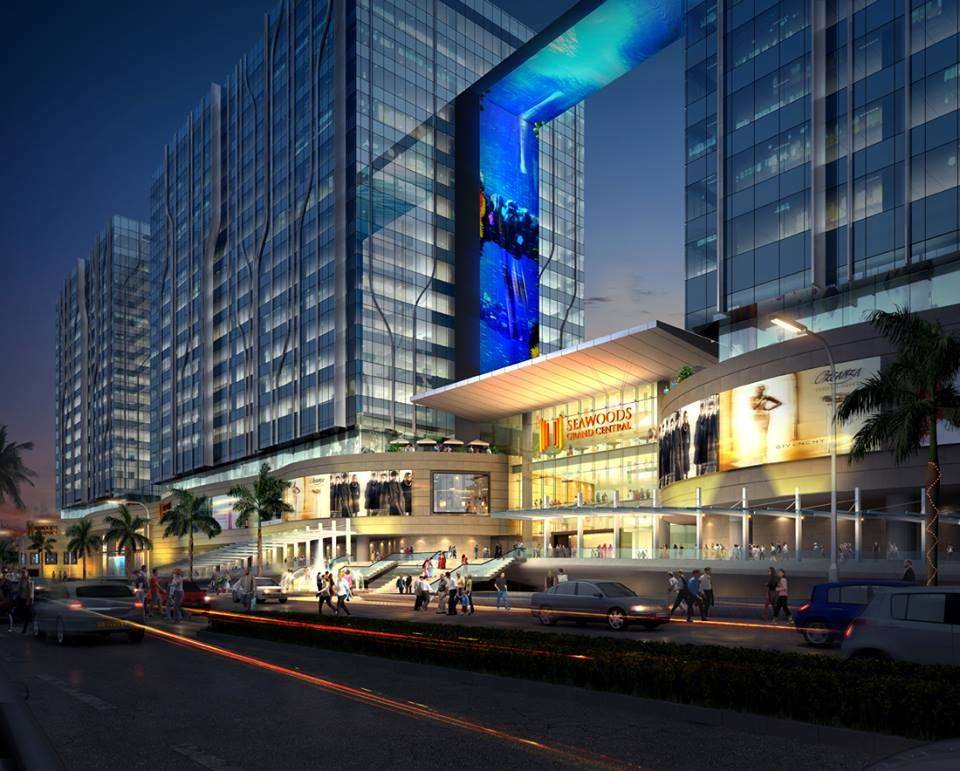
Dharavi Redevelopment: More Than Just Real Estate
Few projects have the power to transform lives like the Dharavi redevelopment. Often labeled as one of Asia’s largest slum areas, Dharavi is on the brink of a historic metamorphosis under Adani’s leadership.
Here’s what makes this project significant:
- Modern living standards: Residents will receive new apartments featuring separate kitchens, in-built toilets, better ventilation, and more light.
- Upgraded living spaces: Homes will grow from the existing ~269 sq ft to between 315–322 sq ft under PMAY norms.
- Eligibility criteria: Free new homes will be offered to those who can prove residence in Dharavi prior to January 1, 2000. Others will have access to affordable rental housing.
Beyond real estate, this initiative is about human dignity, offering thousands of families a chance at a safer, cleaner, and healthier life.
Also Read : Adani-Led Navbharat Mega Developers to Transform Dharavi
Panvel Township: Smart Urban Planning and Sustainable Value
The Adani Panvel Township isn’t just a housing cluster—it’s a self-sustained urban ecosystem. Here’s what sets it apart:
- Residential zones with diverse housing options
- Schools, hospitals, shopping, and entertainment hubs
- Commercial and office spaces
- Expansive green zones and open areas
The township is strategically located in the Navi Mumbai Airport growth corridor, ensuring excellent future connectivity. Adani has secured 24 key land deals across 2023–2025, strengthening its footprint in Panvel and boosting investor confidence.
For homebuyers and investors alike, Panvel offers:
- Long-term price appreciation potential
- High quality of life due to planned infrastructure
- A balance of urban convenience and green living
Why It’s the Right Time to Invest
With infrastructure projects like NMIA and the Mumbai Trans Harbour Link nearing completion, Navi Mumbai and Panvel are among India’s hottest property zones. Adani’s projects align perfectly with this momentum.
Key investment advantages include:
- Strategic location with unparalleled connectivity
- High brand trust and transparency
- Potential for significant returns as demand surges post-infrastructure completion
- Future-ready developments prioritizing sustainability
Adani’s recognition as the Visionary Real Estate Brand of the Year 2025 underlines its leadership in reshaping urban India.
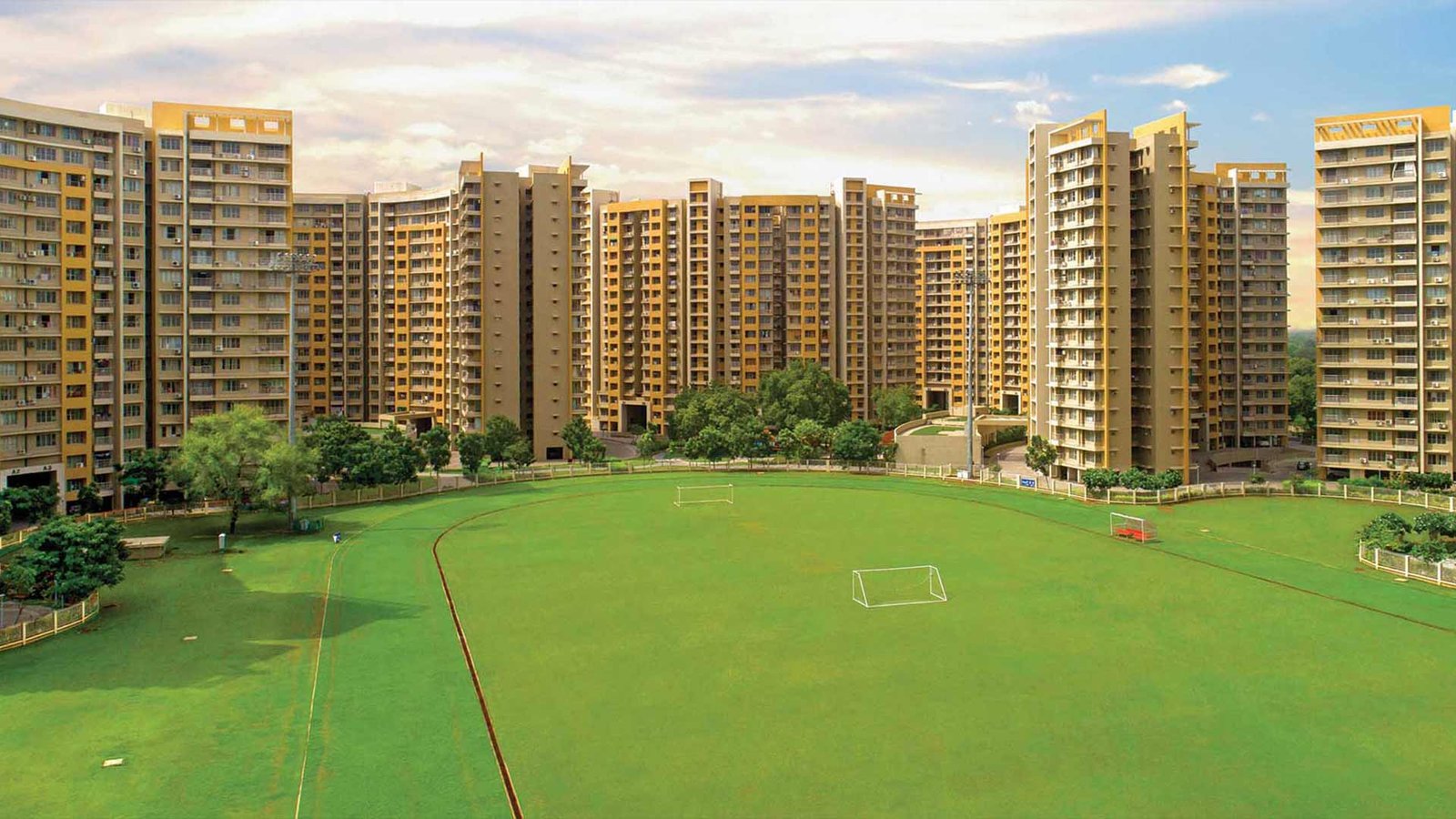
Government Support and Market Dynamics
The Maharashtra government is actively supporting Adani’s urban development ventures, making it easier for large-scale projects to move forward smoothly.
Government initiatives driving growth:
- Faster approvals for redevelopment
- Simplified inter-departmental processes
- Tax and zoning benefits for projects that improve urban infrastructure
Meanwhile, Adani’s scale is pushing other developers to raise their game. The result? More choices, better quality homes, and competitive pricing for buyers in Mumbai and Navi Mumbai.
Conclusion
Adani Real Estate’s projects mark a significant turning point in the real estate dynamics of Mumbai and Navi Mumbai. Whether it’s the transformative Dharavi redevelopment, offering residents a dignified new life, or the futuristic Panvel township redefining urban living, Adani is reshaping the region’s skyline—and its future.
For anyone considering property investment in 2025, now is the time to explore Mumbai and Navi Mumbai’s evolving markets. Adani’s projects don’t merely promise returns—they’re creating sustainable cities for generations to come.
Data Centres and Warehousing: The Next Big Real Estate Investment Trend
India’s real estate sector is witnessing a paradigm shift. Traditional investments like office spaces and malls are being overtaken by high-growth, future-focused segments: data centres and warehousing. These are not mere structures but essential components of the country’s digital economy and e-commerce ecosystem. As long-term infrastructure investments, they offer stable returns, lower risk, and strategic value – positioning them as the next big trend in real estate.
Table of Contents
1. Growth of Data Centres in India
India’s data consumption is skyrocketing with the rise of mobile internet, cloud computing, and AI. This has catalyzed demand for data centres, massive facilities housing servers and IT infrastructure. Cities like Mumbai, Chennai, and Hyderabad are emerging as major hubs due to:
- Reliable power and cooling infrastructure
- Access to undersea cable landing stations
- Government incentives and fast-track approvals
Major players such as AdaniConneX, STT GDC, and Reliance are spearheading this growth. India is expected to double its data storage capacity by 2026, offering strong potential for investors.
2. Warehousing Surge Driven by E-commerce
The boom in e-commerce and 3PL logistics has revolutionized warehousing. Companies like Amazon, Flipkart, and Reliance Retail require large, well-connected warehouses near urban centres.
Top warehousing clusters include:
- Bhiwandi (Mumbai)
- Pune
- Hosur (Bengaluru)
- NCR
- Hyderabad
Warehousing now goes beyond storage – it’s about strategic inventory management and last-mile delivery, making it a cornerstone of India’s supply chain infrastructure.
3. Why Infrastructure Assets Are Attracting Investors
Post-pandemic, investors have grown cautious of retail and commercial office spaces due to high vacancy and lower returns. In contrast, infrastructure real estate offers:
- Long lease terms (up to 20 years)
- Low tenant turnover
- Higher annual rental yields (8-11% for data centres)
- Essential service classification
Global and domestic funds are shifting to these assets for stable, inflation-protected returns.
4. Strategic Location Considerations
Location is critical for success:
Data Centres Require:
- Continuous, high-quality power
- Access to fibre optic networks
- Proximity to tech parks and city cores
Warehouses Need:
- Connectivity to national highways and ports
- Proximity to consumption zones
- Large tracts of affordable land
Choosing correctly aligned zones helps reduce costs and maximizes returns.
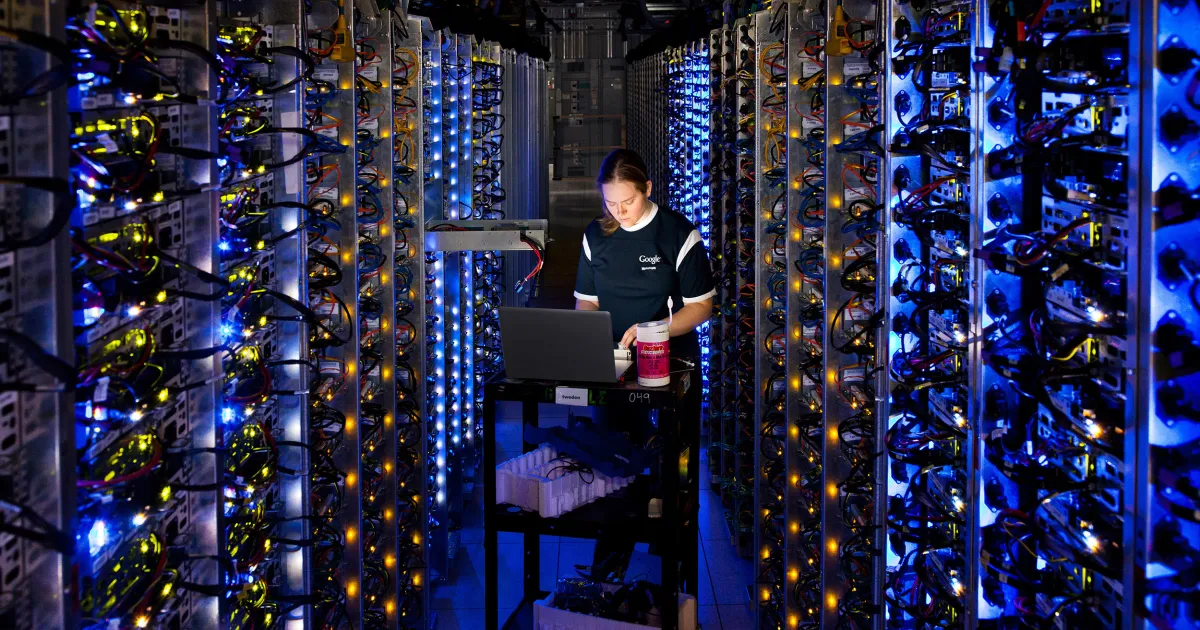
5. Yield Comparison
| Property Type | Rental Yield | Typical Lease Duration |
|---|---|---|
| Data Centres | 8% – 11% | 10 – 20 years |
| Warehousing | 7% – 9% | 5 – 10 years |
| Office Spaces | 5% – 7% | 3 – 9 years |
6. Key Investment Hubs in India
New development zones are gaining traction:
- Chennai – for data centres due to undersea cables
- Pune & Hosur – warehousing for auto and e-commerce
- Hyderabad – growing tech and logistics base
- Lucknow & Coimbatore – emerging logistics zones
7. Sustainability in Infrastructure Real Estate
Green infrastructure is now a must-have. Investors and tenants prefer IGBC/LEED-certified buildings that feature:
- Solar rooftop systems
- LED lighting & IoT sensors
- Rainwater harvesting
- Smart cooling systems
Green-certified assets attract better tenants and qualify for REIT inclusion.
8. Financing Models & REIT Prospects
Entering this segment is now easier with:
- REITs for fractional ownership and regular income
- Private Equity and JV models
- Sale-leaseback deals for capital efficiency
India’s infrastructure REIT market is evolving rapidly, with data centre and logistics REITs gaining momentum.
9. Regulatory and Land Acquisition Challenges
Challenges include:
- Zoning and land-use constraints
- Delays in utility connections
- Environmental clearances
States like Maharashtra, Tamil Nadu, and Telangana are offering fast-track approvals and single-window systems to reduce investor hurdles.
10. Infrastructure’s Impact on Land Value
Government-led projects such as Bharatmala, DMIC, and DFC have a multiplier effect:
- Land value appreciation
- Increased job creation
- Boost to demand for warehousing/logistics assets
Investing before such developments materialize can lead to exponential gains.
11. Strategic Takeaways for Investors
- Focus on location and connectivity
- Prioritize clear land titles and compliance
- Embrace green tech and design
- Partner with domain specialists
- Leverage REITs for diversification
12. Outlook: What Lies Ahead
India’s digitization and consumption trends will continue to power demand for data centres and warehouses. With strong government support and evolving investment instruments, this asset class offers unmatched potential for yield and stability.
Now is the time for forward-thinking investors to reposition their portfolios towards infrastructure real estate.
Explore more insights on infrastructure and emerging real estate trends at Urvik Consulting
Property Tax in India 2025: Key Changes Every Property Owner Must Know
Table of Contents
The Indian property tax landscape has undergone significant changes in 2025, impacting homeowners, landlords, and real estate investors alike. Whether you’re selling a property, earning rental income, or holding unsold units, it’s crucial to understand these updates to stay compliant and optimize your tax liabilities. Here’s a simplified guide to the most important changes every property owner should know.
Capital Gains Taxation Changes
Selling property in 2025 now comes with new tax rules. Properties held for 24 months or more are considered long-term assets (earlier it was 36 months). However, a major shift is that indexation benefits have been removed. Previously, indexation helped reduce your taxable gains by adjusting for inflation. Without it, your taxable profits—and tax outgo—can increase substantially.
From 2025 onwards, long-term capital gains (LTCG) are taxed at a flat 12.5%, irrespective of the purchase date. This can significantly affect those selling properties acquired many years ago. Plan your sale carefully and explore available exemptions to minimize tax impact.
Timing of Sale and Tax Deferral
If you’re considering selling property, timing is now more critical than ever. Sales completed after April 1, 2025, will have their capital gains taxed in the next financial year (2025–26). This gives sellers time to:
- Plan tax payments
- Explore reinvestment options
- Manage cash flow more effectively
A delay of just a few days could mean significant tax savings or better planning opportunities.
Annual Value Computation Adjustments
From 2025, the annual value of a property—which determines how much tax you pay—is calculated as the higher of:
- Actual rent received
- Expected rent based on market rates
For vacant properties, taxation now considers only the months the property was rented, offering relief for landlords facing longer vacancies. This ensures fairer taxation and lower tax bills during periods without tenants.
Interest Deduction Limits
Home loan interest continues to provide tax benefits, but the rules differ based on how the property is used:
- Self-occupied homes: Maximum deduction of ₹2 lakh per year on interest paid.
- Rented properties: No upper limit on the interest deduction.
This change favors landlords and can make investment properties more attractive from a tax perspective.
Standard Deduction and Arrears Taxation
Rental income remains eligible for a standard deduction of 30%, covering maintenance and repairs—even if your actual expenses are lower. This rule continues in 2025.
If you receive arrears or delayed rent, it’s taxed in the year you receive it, not the year it was due. You can still claim the 30% deduction on this delayed income, offering clarity and relief for landlords dealing with late-paying tenants.
TDS Limit on Rental Income Raised
There’s good news for smaller landlords: the threshold for Tax Deducted at Source (TDS) on rent has increased. Previously, tenants had to deduct TDS if annual rent exceeded ₹2.4 lakhs. In 2025, this limit has risen to ₹6 lakhs annually.
This means:
- Fewer landlords dealing with TDS paperwork
- Less compliance burden for small property owners
- A boost for rental activity, especially in Tier 2 and Tier 3 cities
If your annual rent is below ₹6 lakhs, tenants no longer need to deduct tax before paying you.
Set-Off and Carry Forward of Losses
If your home loan interest payments exceed your rental income or notional rent, it creates a loss under Income from House Property. In 2025:
- You can set off this loss against other income (like salary) up to ₹2 lakh annually.
- Excess losses can be carried forward for 8 years, but only to adjust future income from house property—not other income sources.
This helps investors manage tax liabilities over time, especially those with multiple properties or long-term investment strategies.

Taxation of Co-Owned Properties
For properties owned jointly:
- If ownership shares are clearly defined (e.g., 50:50), each co-owner pays tax on their share of income individually, reducing tax burden.
- If ownership shares are unclear, the income may be taxed as an Association of Persons (AOP), potentially leading to higher taxes.
Always specify ownership ratios in your sale deed or agreement to keep taxes transparent and fair.
Also Read : The RERA Revolution 2025: A New Era of Trust in Mumbai’s Real Estate
Relief for Unsold Inventory
Builders often hold unsold units post-completion. Previously, they had to pay tax on these as if they were rented out. From 2025, the annual value of unsold inventory is treated as nil for two years after a project receives its completion certificate.
This means:
- No tax liability on unsold flats or commercial units for two years
- Improved cash flow for developers
- Support for the real estate sector during slow sales periods
Exemptions and Reinvestment Limits
If you sell property and earn a capital gain, you can avoid tax by reinvesting in another home. However, new caps apply in 2025:
- You must purchase a new home within 2 years, or construct one within 3 years.
- The maximum exemption allowed is ₹10 crore. Gains beyond this limit are fully taxable.
- Selling the new property within 3 years triggers tax on the previously exempted gains.
These rules encourage genuine reinvestment rather than short-term tax planning.
Conclusion
The property tax rules in 2025 bring significant changes for anyone dealing with real estate in India. From stricter capital gains taxes to higher TDS thresholds on rental income, these updates will directly impact your returns and tax liabilities.
Whether you’re a homeowner planning to sell, an investor building rental income, or a developer managing inventory, understanding these changes can help you plan better and avoid costly surprises. With careful tax planning and smart reinvestment strategies, you can still save substantially under the new regime.
Mumbai’s Redevelopment Boom 2025: Transforming the City Skyline and Communities
Table of Contents
Mumbai Redevelopment Boom 2025 : Mumbai, the city that never sleeps, is in the midst of a striking transformation. Towering cranes, dust-laden sites, and gleaming new high-rises are reshaping the city’s skyline. But this isn’t just about architecture—it’s a fundamental shift in how Mumbai lives, grows, and sustains itself.
Welcome to the Mumbai redevelopment boom of 2025, a wave of change that’s modernizing aging neighborhoods, improving living standards, and unlocking fresh opportunities for both developers and homebuyers.
What’s Driving Mumbai’s Redevelopment Surge?
Mumbai’s redevelopment momentum is being propelled by two powerful forces:
Aging Buildings
Over half of Mumbai’s residential buildings are more than 30 years old. Many are in poor condition, lacking modern amenities and structural safety. Meanwhile, the city’s population keeps growing, fueling demand for well-connected, modern housing. Redevelopment allows outdated buildings to be replaced with high-rises featuring better amenities, safety measures, and infrastructure.
Government Support
Recent policy changes have made redevelopment far more attractive to developers. The revised Development Control and Promotion Regulation (DCPR 2034) has streamlined approvals, relaxed parking norms, and introduced incentives for building community infrastructure like schools and hospitals within projects. These changes have significantly reduced hurdles for redevelopment projects, allowing faster execution.
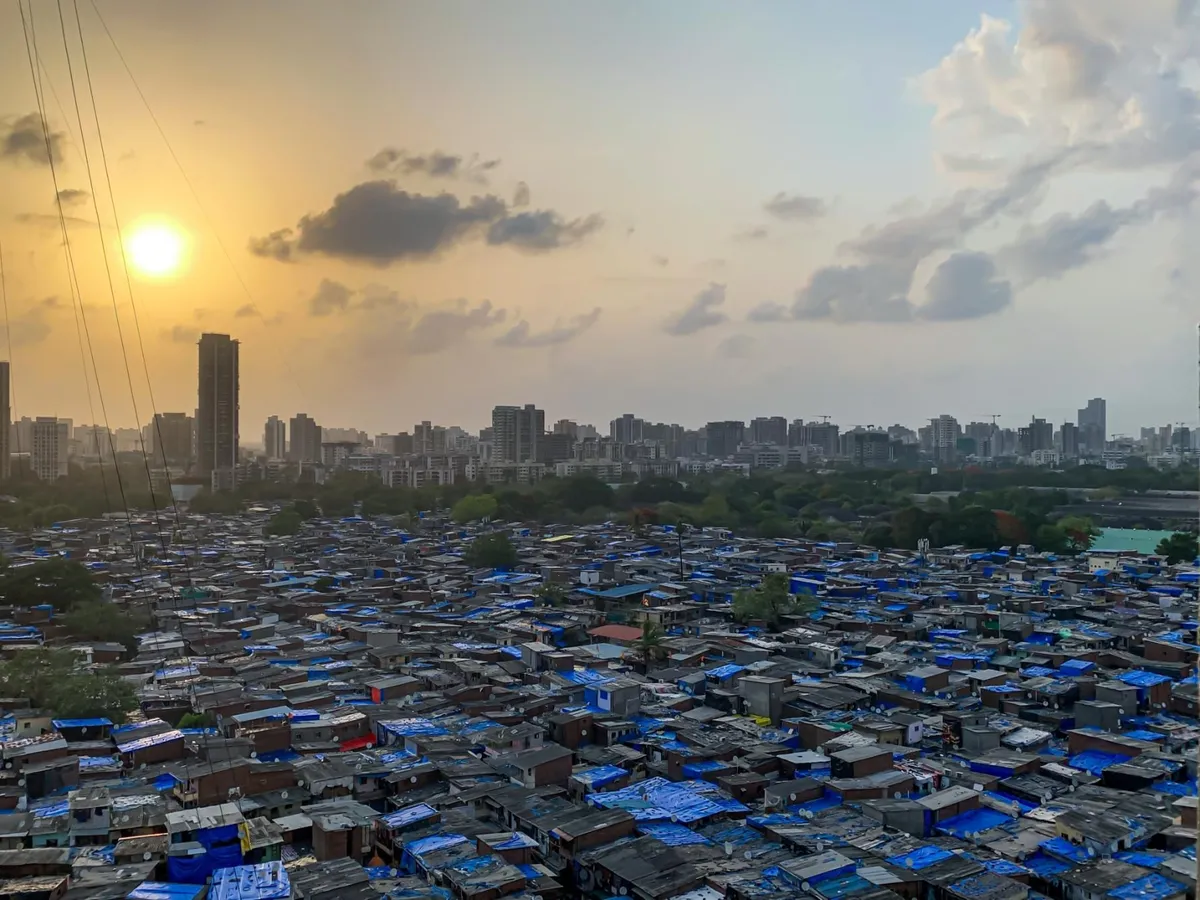
Hotspots of Redevelopment in Mumbai
Redevelopment isn’t limited to a single area—it’s sweeping across the city. Some of the busiest zones include:
- South Mumbai: Girgaon, Byculla, Mazgaon, where old chawls and aging structures are being replaced by modern towers.
- Western Suburbs: Andheri, Goregaon, Borivali, and Kandivali, where society-developer partnerships are transforming local skylines.
- Eastern Suburbs: Chembur, Mulund, and Ghatkopar are seeing a spike in new launches driven by redevelopment activity.
Also Read : Key Legal Checklist for Buying a Property in Thane
Notable Redevelopment Projects
Several large-scale projects stand out in Mumbai’s redevelopment boom:
- The Imperial, Tardeo: Twin 60-storey towers developed through a slum rehabilitation model.
- Bhendi Bazaar Redevelopment: Transforming slum clusters into modern towers, with Phase 1 completed (Al Sa’adah Towers).
- Dharavi Redevelopment: India’s largest slum revamp, spread over 600 acres, with a ₹3 billion budget.
- Piramal Mahalaxmi: High-end apartments built through slum redevelopment under SRA norms.
- Kolte-Patil Society Project: Spanning Mulund West and Vashi, redeveloping 7.3 lakh sq. ft. with ₹1,200 crore revenue potential.
- Mahindra Lifespaces: Active projects in Andheri West and Malad under cluster redevelopment.
- Navjivan Society, Mahim West: Raymond Group’s ₹1,700 crore redevelopment on 3.6 acres.
- Kalpataru Borivali: A six-acre redevelopment transforming into 7 lakh sq. ft. of modern housing.
Benefits of Redevelopment
For Current Residents:
- Safer buildings built to modern codes
- Access to lifts, parking, security, and green spaces
- Increased property value
- In some cases, larger apartments than the original units
For New Homebuyers:
- Opportunity to live in central, well-established neighborhoods
- Modern amenities compared to older resale stock
- Often more affordable than entirely new projects in peripheral zones
For the City:
- Improved skyline and urban infrastructure
- Optimized land use in a space-constrained city
- Better fire safety and disaster resilience
Supporting Mumbai’s Essential Workforce
Redevelopment isn’t only about luxury towers. It also safeguards affordable housing for Mumbai’s essential workers—drivers, nurses, security staff, and domestic workers. Many older chawls and MHADA societies are being rebuilt, with original residents offered new apartments in the redeveloped projects. This helps preserve communities and prevents displacement of people vital to the city’s daily life.
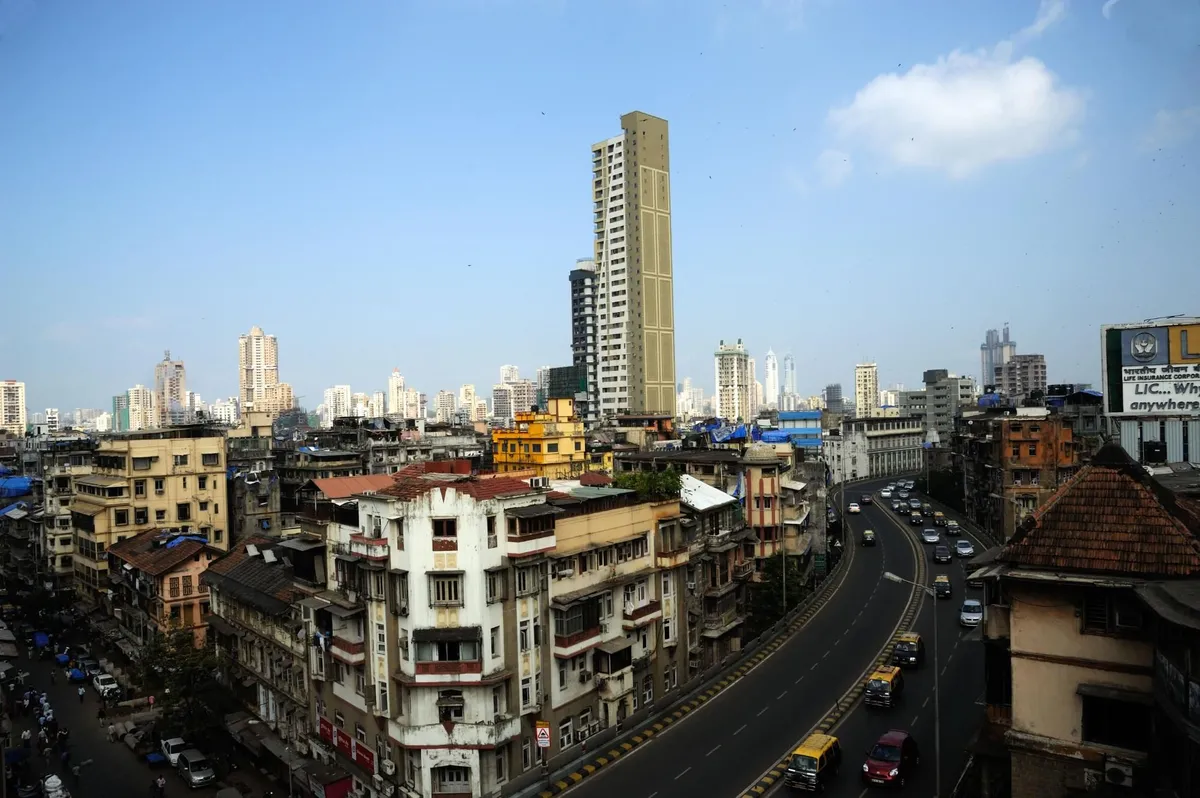
What Should Buyers Consider?
If you’re exploring properties in redeveloped buildings:
- Check the developer’s past track record in similar projects.
- Review the project’s RERA registration and approval status.
- Confirm occupancy timelines, which may differ from fresh launches.
- Understand how many tenants are being accommodated versus new flats being sold.
- Compare home loan options, as some banks offer special terms for redevelopment properties.
The Future of Mumbai Redevelopment
Mumbai’s redevelopment boom isn’t just changing buildings—it’s reshaping the city’s identity and how people live and work. For buyers, it’s a chance to own modern homes in familiar neighborhoods. For societies, it’s safety and a fresh start. And for Mumbai, it’s the opportunity to grow without losing its soul.
The next few years will determine how successfully the city balances modernization with inclusivity. But one thing is certain: Mumbai’s skyline—and its story—will never be the same.
Understanding Carpet Area vs. Built-Up Area vs. Super Built-Up Area: The Ultimate Guide for Property Buyers
Table of Contents
Introduction
Imagine visiting a gorgeous property that’s advertised as 1,500 sq. ft., only to find the actual space feels much smaller than you expected. Confused? You’re not alone.
The reason lies in the differences between Carpet Area, Built-Up Area, and Super Built-Up Area—three terms every property buyer must understand. Whether you’re investing in a home, an office, or a retail space, knowing these differences will help you make smarter decisions and avoid costly surprises.
What is Carpet Area?
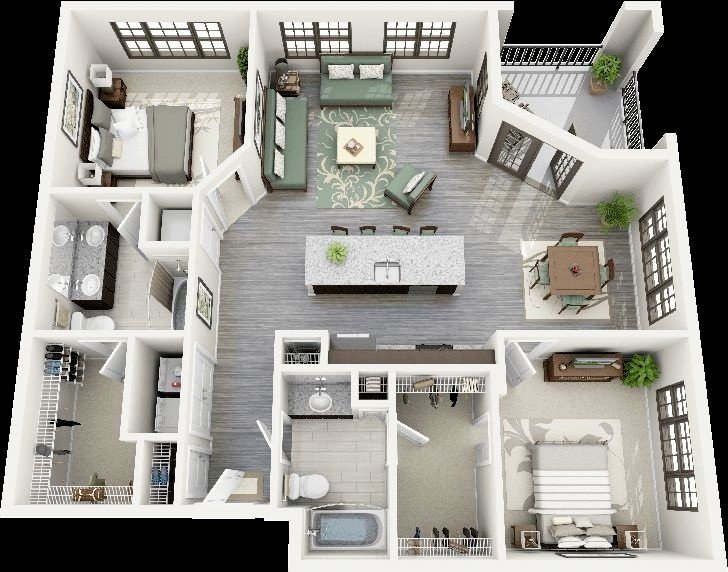
Carpet Area is the actual usable space inside your property—the area you can physically walk on or lay a carpet on.
✅ Included in Carpet Area:
- Living room, bedrooms, dining area
- Kitchen
- Bathrooms and toilets
- Internal partition walls
🚫 Not included:
- External walls
- Balcony or terrace
- Common areas like corridors, lobbies, staircases
Pro Tip: Carpet Area usually constitutes around 70–80% of the Super Built-Up Area. Always ask for this figure when comparing properties.
What is Built-Up Area?
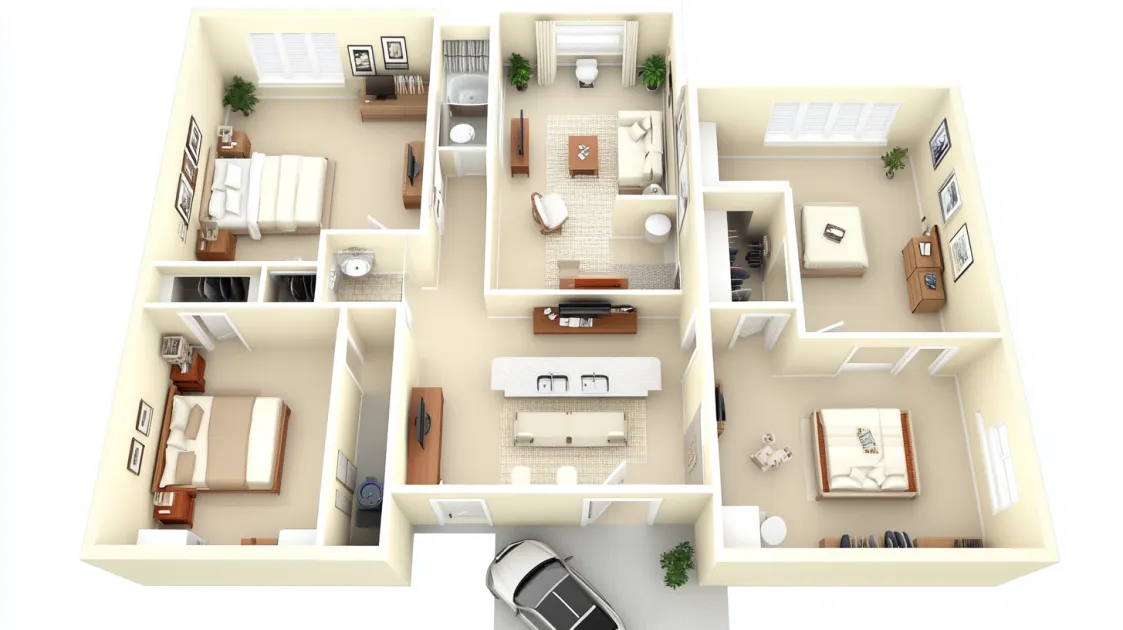
The Built-Up Area expands on the Carpet Area by adding the thickness of the walls and spaces like balconies or terraces.
✅ Included in Built-Up Area:
- Carpet Area
- Internal and external wall thickness
- Balcony, utility areas
Built-Up Area is typically 10–15% larger than the Carpet Area and gives you a better idea of how much space the unit physically occupies.
What is Super Built-Up Area?
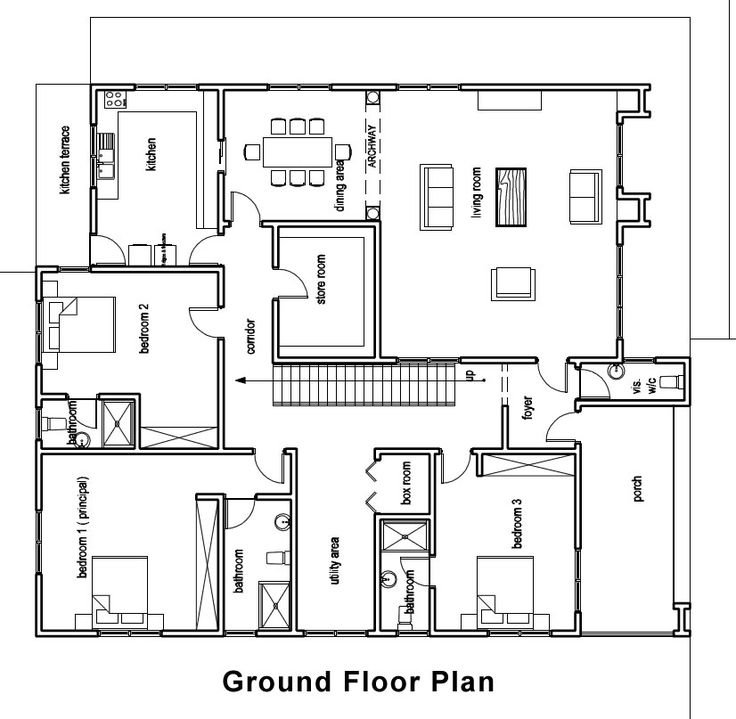
This is where things often get tricky. The Super Built-Up Area includes the Built-Up Area plus your proportionate share of common areas.
✅ Included in Super Built-Up Area:
- Built-Up Area
- Common corridors and lobbies
- Staircases
- Lift shafts
- Clubhouse, swimming pool, gym
- Sometimes parking areas
Builders often quote prices based on the Super Built-Up Area. This can inflate the per-square-foot cost you’re paying because it includes spaces you share with other residents or occupants.
Also Read : Buying Property in Thane: Hidden Costs You Must Know
Why These Differences Matter
💰 Impact on Cost
- Property pricing is usually calculated on the Super Built-Up Area.
- A higher Super Built-Up Area means a higher total cost—but not necessarily more usable space.
🏠 Impact on Space Planning
- Your furniture, layout, and daily comfort depend on the Carpet Area.
- Always check how much usable space you’re truly getting.
🔍 Transparency and Comparison
- Knowing these terms helps you compare different projects accurately.
- Ask for the area breakup before finalizing any deal.
Example Calculation
Suppose a developer advertises a flat as 1,500 sq. ft. Super Built-Up Area:
- Carpet Area: ~1,050 sq. ft.
- Built-Up Area: ~1,200 sq. ft.
- Super Built-Up Area: 1,500 sq. ft.
So, while you’re paying for 1,500 sq. ft., your actual usable space may only be around 1,050 sq. ft.
Conclusion
Buying property is one of the biggest financial decisions you’ll make. Understanding Carpet Area, Built-Up Area, and Super Built-Up Area is essential for ensuring you get value for your money—and the right amount of space for your needs.
Never hesitate to ask developers for clarity. A few questions upfront can save you significant money and help you avoid buyer’s regret down the road.
